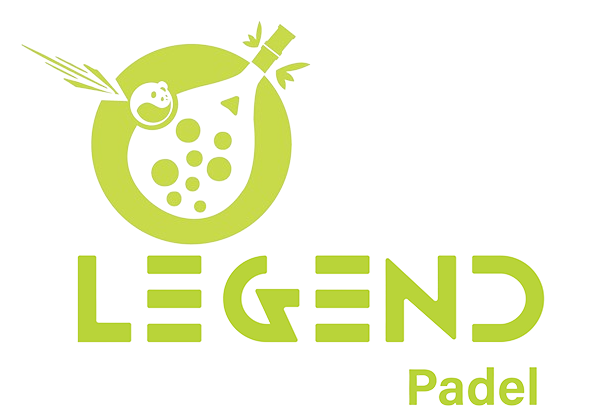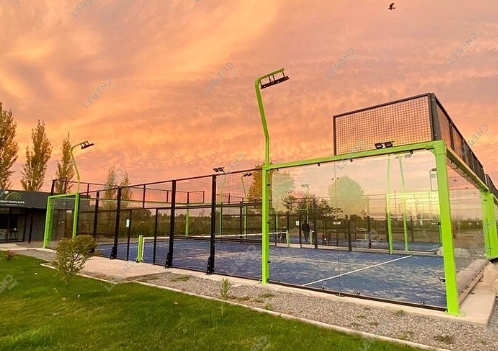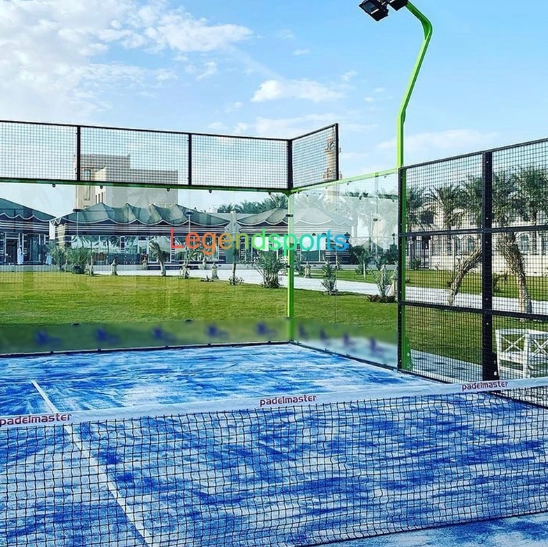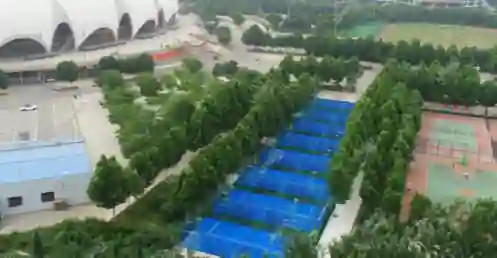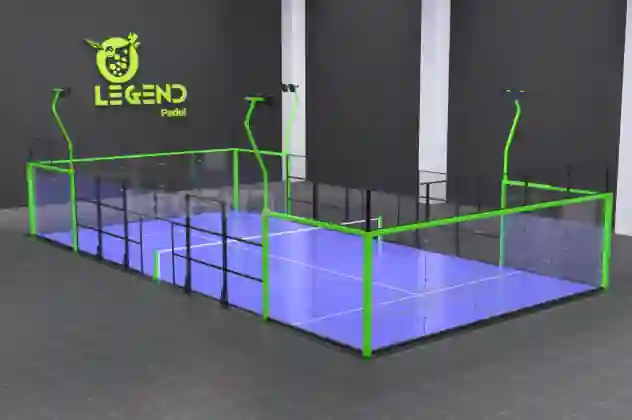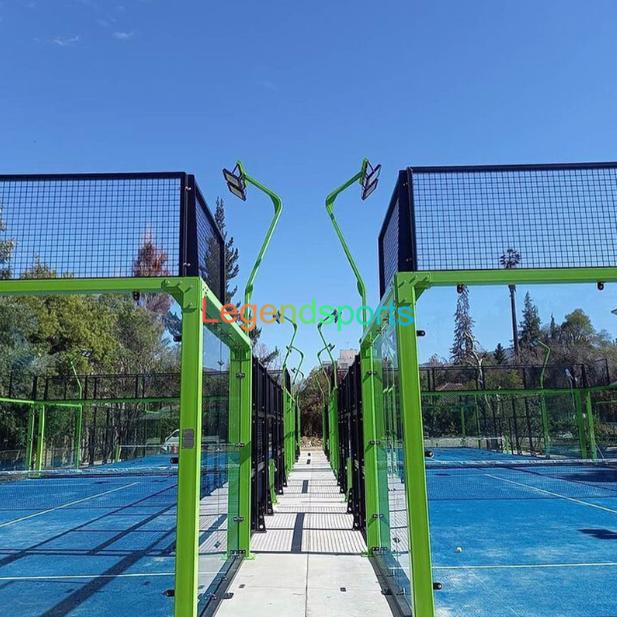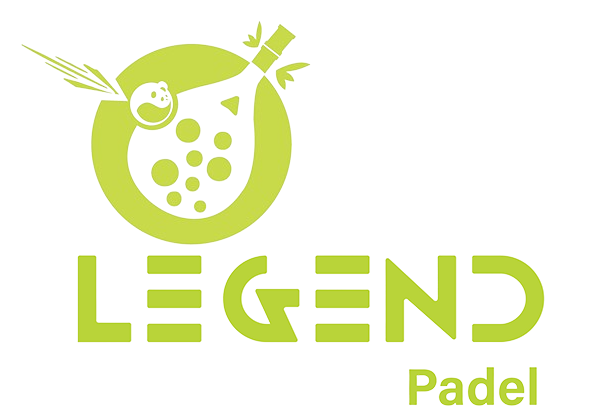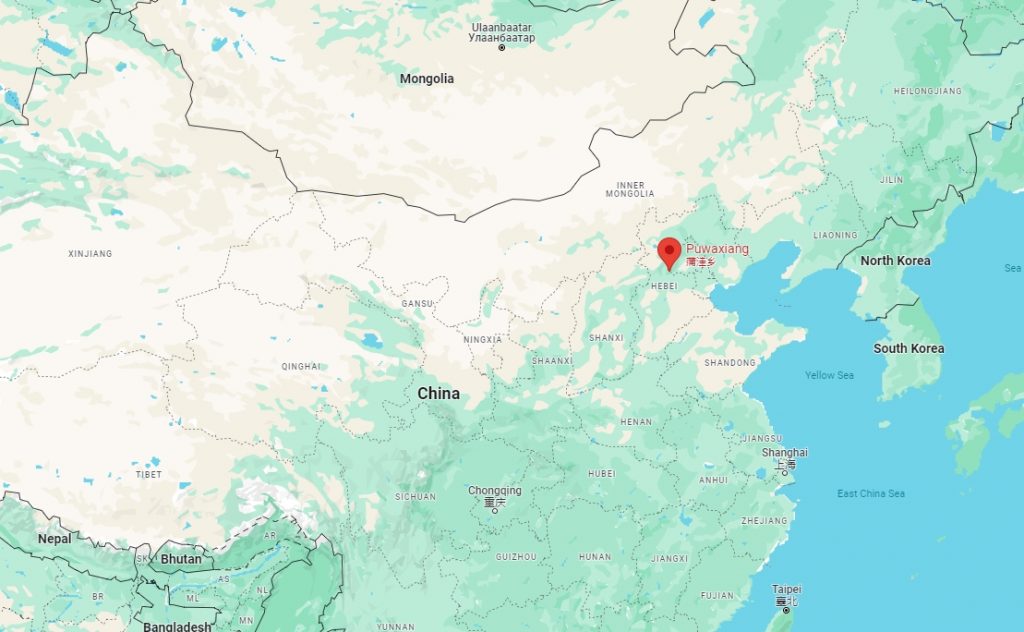What Is Padel and Why It Matters
Padel is a dynamic racquet sport that combines elements of tennis and squash. Played on a smaller court enclosed by walls made of tempered glass, it offers a unique blend of strategy, teamwork, and fun. Its growing popularity stems from its accessibility and social appeal, making it a favorite among players of all skill levels. Our padel courts are designed with premium materials like 12mm-thick tempered glass and high-quality artificial turf to ensure safety, durability, and an enhanced playing experience.
Comparing Padel and Tennis in Global Terms
Tennis has long been a worldwide favorite. Yet, padel is quickly catching up. Unlike tennis, where solo skills often shine, padel focuses on pairs working together. Its doubles format builds teamwork. The court is smaller, measuring 20m x 10m. Walls allow ball rebounds, making it more inviting for newcomers. We provide various court styles, like panoramic or mobile ones. These suit different player needs.
Tennis demands open space and advanced techniques. Padel, however, feels less intimidating. Its compact size and wall rebounds make it easier to start. Our courts cater to all, from casual players to pros.
Growth of Padel Courts Worldwide
Explosive Court Expansion in Europe
Europe leads Padel’s growth. Nations like Spain, Italy, and Sweden see a boom in paddle tennis court dimensions. More courts are built to meet demand. The sport’s social charm fits well with European culture. Clubs invest in modern facilities to attract players.
For instance, Spain has thousands of courts. Sweden’s clubs are growing fast, too. These spaces draw crowds, boosting local sports scenes. Our high-quality courts support this surge, ensuring top play conditions.
Padel Facility Boom in the Americas
North and South America also see rapid growth. From Canada to Chile, new clubs pop up quickly. In Chile, we installed four panoramic courts—two indoors, two outdoors. These let players enjoy padel in any weather. This shows the sport’s flexibility across climates.
The Americas embrace Padel’s fun and social nature. Clubs in Brazil and Mexico are expanding fast. Our courts help make padel a staple in these regions, offering reliable setups.
Emerging Markets: India, Australia, USA
New markets like India, Australia, and the USA are joining the trend. The smaller paddle tennis court size suits crowded cities. Space is often limited in urban areas. Our single panoramic courts (20m x 6m) help these places add padel easily. They fit into existing sports setups.
For example, Australia’s urban clubs adopt padel quickly. In the USA, coastal cities show interest. India’s sports scene is warming to it, too. Our tailored courts make this growth possible.
Court Conversion and Infrastructure Trends
Tennis-to-Padel Court Conversions
A key trend is turning tennis courts into paddle tennis courts. This maximizes space use. Clubs gain a fresh income source by offering padel. The smaller court size makes conversions practical and cost-effective.
For instance, a tennis court can become two padel courts. This doubles the playing capacity. Clubs see more players and revenue. Our designs support these changes seamlessly.
Economic Drivers & Court Efficiency
Padel courts save money compared to tennis courts. They’re smaller and need less upkeep. Our steel structures use strong SPHC steel with smooth surfaces. This ensures long-lasting use. These traits make padel a smart choice for sports venues.
Lower costs attract investors. Maintenance is simple, too. Clubs find padel courts a budget-friendly way to grow. Our materials keep quality high while keeping expenses down.
Club Strategies and Club-level Impacts
Clubs use Padel’s popularity to draw crowds. They host tournaments and social gatherings. These boost member interest. Our courts meet global standards. They suit both casual games and serious matches.
Tournaments bring excitement. Social events build community. Clubs see more sign-ups and active members. Our reliable courts make these activities possible, enhancing club life.
Accessibility and Social Appeal
Easier Learning Curve & Inclusive Play
Padel’s simple rules help beginners start fast. Unlike tennis or pickleball, which need more skill, padel feels approachable. Players can enjoy fun matches right away. The walls keep the ball in play, making games less daunting.
Newcomers love the quick start. They don’t need years of practice. This inclusivity draws diverse players. Our courts enhance this ease, offering smooth surfaces for all.
Social & Fitness Aspects of Padel
Padel encourages connection through its doubles format. It also gives a full-body workout. Players improve flexibility and stamina. By playing padel, they stay active and reduce stress. The sport blends fun with health benefits.
Friends enjoy teaming up. The exercise feels less like work. Players leave the court refreshed. Our courts support this lively, healthy vibe with safe, quality designs.
Challenges & Limitations
Infrastructure Gaps in Emerging Markets
Padel grows fast, but some markets struggle. Emerging regions lack enough infrastructure. Access to quality materials like tempered glass or artificial turf can be limited. This slows progress in building courts.
For example, rural areas face supply issues. Urban centers may lack space. These hurdles delay padel’s spread. Our solutions aim to bridge these gaps with affordable options.
Cost Barriers & Access Issues
Setting up paddle tennis courts can cost a lot. Smaller clubs or communities may find it tough to afford. Yet, our mobile pro courts offer a cheaper way to start. They bring padel to more places.
High costs can limit access. Budget-friendly options help solve this. Our flexible designs make Padel reachable to more players, from small towns to big cities.
With over 3,000 installations worldwide, we lead the panel industry. Our tailored courts meet diverse needs, from urban hubs to remote clubs.
Future Outlook
Projections for Court Expansion and Participation
Padel’s growth shows no signs of slowing. Its compact paddle tennis court size (20m x 10m) fits well in cities. Space is often tight in urban areas. This makes padel a practical choice. New paddle tennis court dimensions are built globally. In Canada, our indoor padel clubs attract first-timers. They find the game fun and easy. In Chile and Qatar, courts are now common in both casual and pro settings.
Mobile and modular courts fuel this rise. Our Mobile Pro Padel Court is easy to set up or take down. It’s perfect for events or temporary spaces. As clubs see padel’s value, more people play. Participation is set to climb sharply.
Will Padel Overtake Tennis?
Tennis remains a global giant. But Padel’s fast rise raises a question: could it outshine tennis? Its ease and social nature give it an edge. Unlike tennis, which needs years of skill-building, padel is quick to learn. The doubles format builds bonds, drawing players of all ages.
Padel courts also cost less. Our designs use SPHC steel and tempered glass. These keep upkeep low while staying strong. Clubs find Padel a smart investment. It offers better returns than tennis courts, boosting its appeal.
Conclusion & Key Insights
Summary of Comparative Trends
Padel shines as a sport that’s easy to play, social, and healthy. Its small paddle ball court size fits urban spaces better than tennis or pickleball courts. Our panoramic and super-panoramic designs suit both casual and pro games. Padel draws new players while keeping veterans hooked. Its wide appeal drives its growth.
The sport’s compact size is a big plus. It fits where larger courts can’t. This makes it ideal for cities. Our courts enhance this, offering quality for all levels.
Practical Implications for Clubs & Players
Clubs gain by adding paddle tennis courts. They see more visitors and engaged members. Tournaments and events draw crowds. Players enjoy a sport that’s simple yet challenging. It keeps them active and sharp. Padel offers exercise and mental boosts in a fun package.
Clubs boost revenue with Padel. Players stay fit and connected. Our courts make this possible, supporting vibrant sports communities.
The Role of Legend Sports in Shaping Padel Trends
As a top padel court maker, Legend Sports shape the sport’s future. With over 3,000 installations globally, our courts are known for quality. From classic to smart designs with LED scoreboards or electric doors, we meet varied needs. Our R&D team pushes new ideas. We offer custom colors and advanced tempered glass. These improve every game.
With our focus on quality and new ideas, we make padel accessible everywhere. Our courts bring the sport to life, from local parks to pro venues.
FAQ
Q: Is Padel more popular than tennis?
A: Padel is gaining fast in tennis. Its ease and social vibe draw crowds. Tennis has a strong global base, but Padel could outpace it in some areas.
Q: Why is Padel so trendy?
A: Padel mixes strategy, fitness, and fun. Its smaller court fits urban spaces. Simple rules attract all skill levels. This makes it a hot pick worldwide.
Q: Is Padel more popular than pickleball?
A: Padel has wider global reach than pickleball. Both are compact and approachable. Yet, padel’s wall rebounds add complexity. This draws more players to its unique style.
